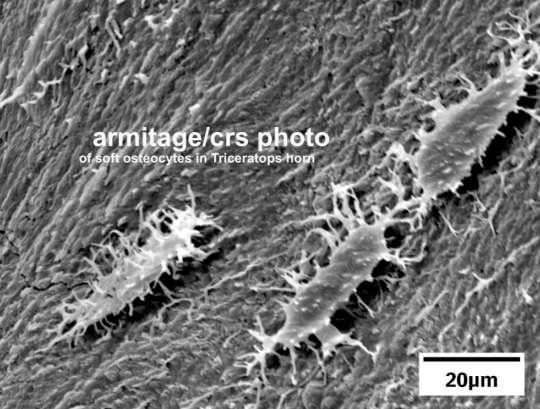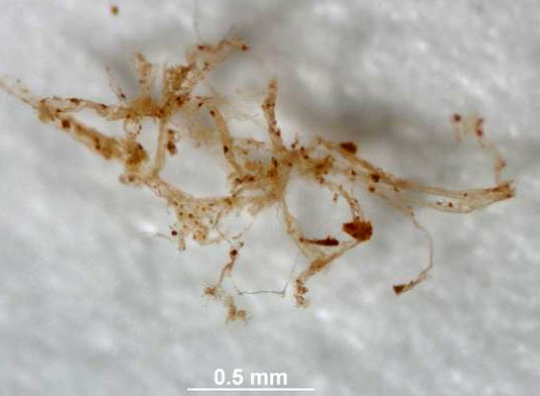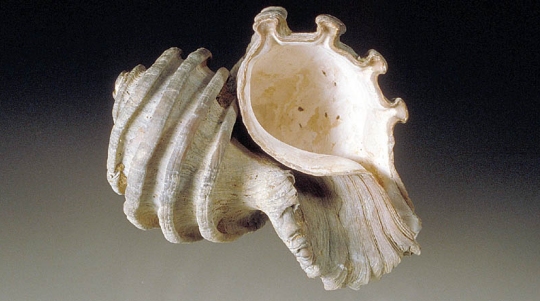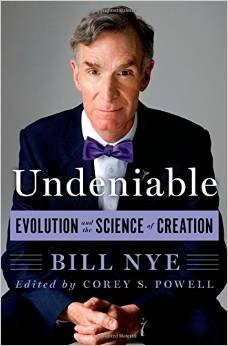
More than three years ago, I wrote about the sad story of Mark Armitage, a gifted scientist who has become an expert in microscopy. In addition to running his own microscope company, he also worked as the Manager for the Electron and Confocal Microscopy Suite in the Biology Department at California State University Northridge. While on a fossil dig in the Hell Creek Formation in Montana, he discovered a 48-inch Triceratops horn. When he and his colleague soaked it in weak acid to remove the mineral components, they recovered soft, brown tissue.
If that’s not exciting enough, he also examined the fossil with a scanning electron microscope, and he found actual bone cells! Not only that, he saw no evidence for mineralization in the cells. In other words, he wasn’t looking at cells that had gone through petrifaction. He was looking at cells that still had their original components. So not only had he found soft tissue in the fossil, he had found soft cells!
Obviously, this kind of find is amazing. Not surprisingly, he and his colleague, Dr. Kevin Lee Anderson, wrote a report on their discovery so that other scientists could learn from it. The report was published in the peer-reviewed, secular journal entitled Acta Histochemica.
Not long after that, the Darwinian Inquisition struck. He was fired from his position at California State University Northridge. As I reported previously, he decided to sue the university. Why? According to him, one faculty member stormed into his lab and shouted:
We will not tolerate your religion in this department, or your creationist projects either!
Armitage thus concluded that he was being discriminated against based on his religion.
Apparently, he was right, because his case has been settled, and he says that he is very pleased with the result.









